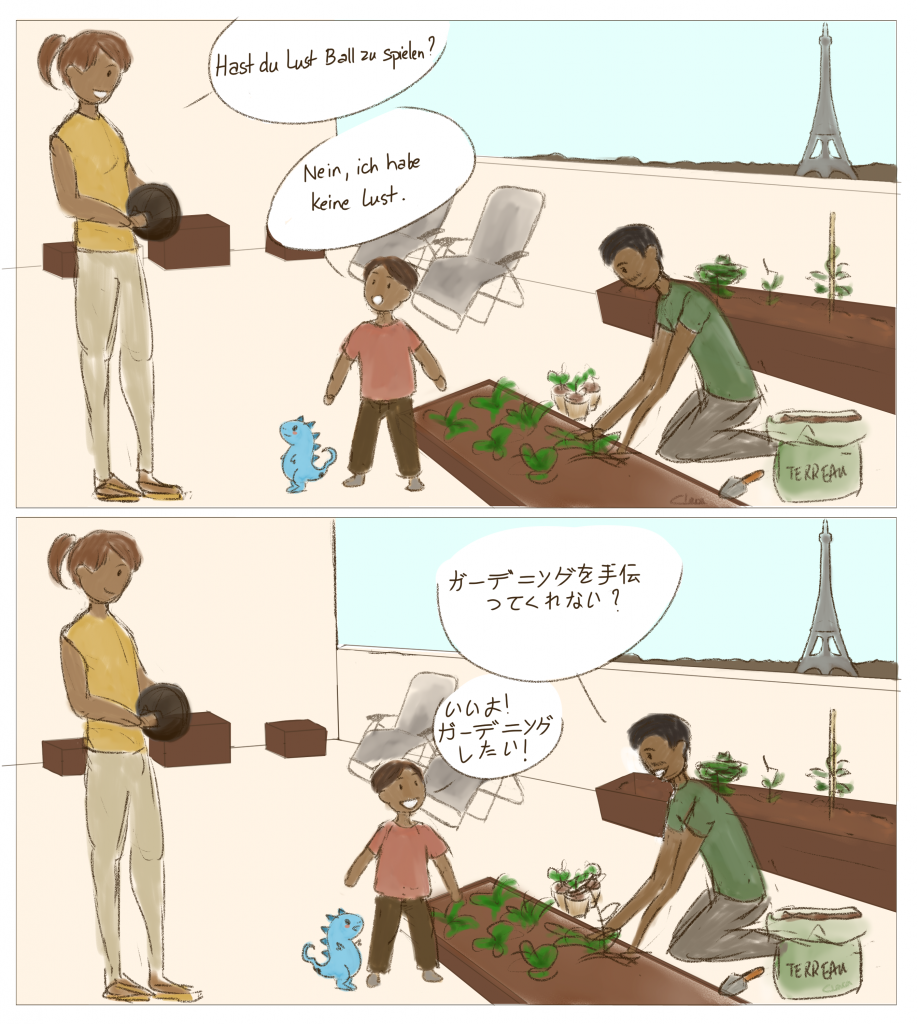How common is it to grow up bilingual?

Lower panel: “Do you want to help me garden?” “Yes! I want to garden!”
Some children will be exposed to just one language when they are young, others may be exposed to two, and others even more. How many languages a child is exposed to will depend on her environment. For instance, in a country like Papua New Guinea where there are about 800 different languages, and a ni-Vanuatu child can be exposed to up to 9 languages in her everyday interactions*!
Multilingualism is more common than we imagine. In some countries, like Singapore, the majority of the population is exposed to multilingualism. Children who grow up in multilingual environments can acquire each language, and will have similar developmental trajectories to their monolingual peers.
Multilingual environments can vary a lot. Just like for monolingual environments, there is no hard and fast number of hours a child has to be exposed to a language to learn it. However, it does seem that anything less than 15-25% of the time might not be enough to foster a little polyglot.
Just like for monolingual environments, the kind of language learning environment is important. For example, playing with grandma is a richer language learning environment than passively watching a TV show.
Join us next time when we dive further into differences between learning one and more than one language.
The scientific sources for our comic:
Byers-Heinlein, K. (2020). Infant language acquisition in bilingual environments. PsyArXiv.
*This is a still unpublished observation from our scientist friends in Vanuatu. We will confirm the exact number and add the reference when the study is finished.
In collaboration with Dr. Krista Byers-Heinlein (from the scientific sources!).
